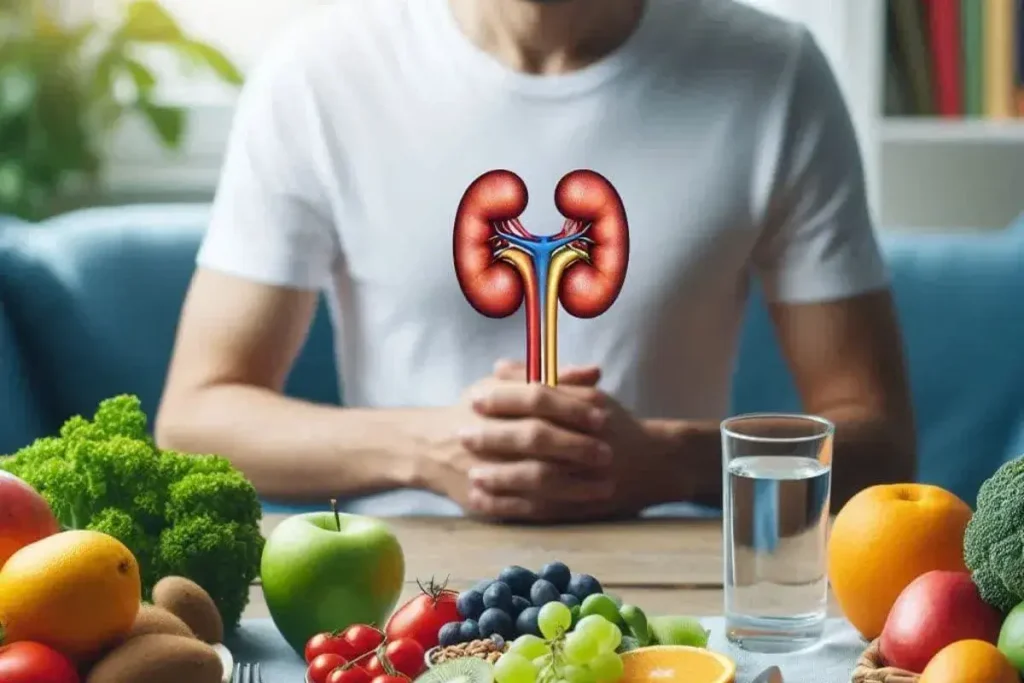
The Best Chronic Kidney Disease Diet | Foods to Avoid
The diet of kidney patients and related issues have a significant impact on the treatment of kidney disease. In fact, the nutrition of a kidney patient is directly related to the quality of life, how to visit a kidney specialist less often, and better treatment. The most important things in the chronic kidney disease diet and nutrition of a kidney patient are the amount of sodium, potassium, and phosphorus in the patient’s diet. In this article from Human Health Mag website, we provide very useful and interesting information about those foods that are effective for the health and improvement of kidney patients.
Stages of Chronic Kidney Disease
Chronic kidney disease (CKD) has five different stages, each classified based on the degree of decline in kidney function (GFR or glomerular filtration rate). The GFR level indicates how well the kidneys filter the blood, and a different treatment plan and diet are recommended for each stage of chronic kidney disease. For this reason, knowing the different stages of kidney disease can help patients better manage their diet and treatment with the advice of a nutritionist.
Electrolyte disturbances (phosphorus, sodium, potassium, etc.) and increased urea and creatinine usually occur from stage 3 onwards, and in stages 1 and 2, blood excretion or protein excretion in the urine is usually seen. Which stage of kidney disease you are in is usually written on the test sheet or it can be determined by checking creatinine and blood urea.
Stage 1
- Kidney function: 90 to 100%
- Features: Kidney damage is very mild at this stage, and kidney function is nearly normal. People at this stage usually do not experience any symptoms of the disease and may not even know that they have a kidney problem. Blood tests may show signs of kidney damage, but kidney function is still generally good.
- Tests: Checking creatinine and urea levels, and checking for protein in the urine may be done at this stage.
Stage 2
- Kidney function: 60 to 89%
- Features: At this stage, kidney damage is more extensive and kidney function is slightly reduced. Patients may have mild symptoms, and the kidneys are still performing many of their functions properly.
- Tests: As in stage 1, blood and urine tests are done to detect changes in kidney function.
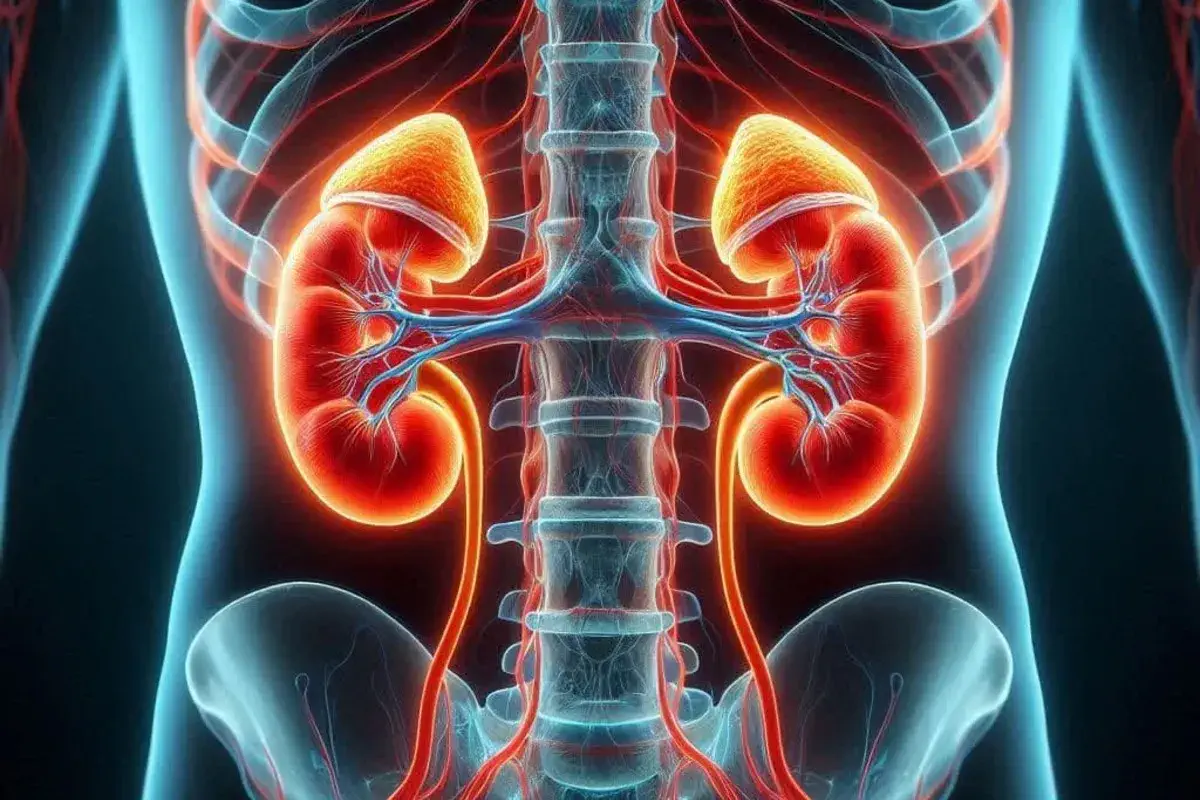
Stage 3
- Kidney function: Stage a or 1: 45 to 59%, Stage b or 2: 30 to 44%
- : In this stage, kidney damage is more significant and patients may experience more symptoms. In stage 3a, kidney function is reduced to about half of normal. In stage 3b, kidney function is reduced to 30 to 44% and patients may experience complications such as fatigue, fluid retention, and electrolyte imbalance.
- Tests: In this stage, in addition to creatinine and urea, more detailed tests are needed to determine the level of electrolytes and urine protein.
Stage 4
- Kidney function: 15 to 29%
- Features: Kidney damage is severe in this stage and patients may experience more serious symptoms such as extreme fatigue, nausea, and swelling in the limbs. At this stage, more restrictions in the diet are necessary and the need to consult a nutritionist is felt more.
- Tests: Frequent and regular check-ups are necessary to monitor electrolyte levels and kidney function.
Importance of Nutrition of Kidney Patient
Acute kidney disease occurs suddenly and due to severe damage to the kidneys and is usually temporary, but in some cases it can also become a chronic disease. However, chronic kidney disease (CKD) progresses gradually over time and may lead to kidney failure, at which point the patient needs dialysis or a kidney transplant.
The issue of diet for kidney patients is an important issue in the treatment of kidney disease in the world. Diabetes and high blood pressure, which are the most common risk factors for kidney disease, can be caused by poor nutrition and poor diet. However, obesity, smoking, genetics, gender, and age can also increase the risk.
Uncontrolled blood sugar and high blood pressure damage the blood vessels in the kidneys, reducing their ability to function optimally. When the kidneys do not work properly, waste products accumulate in the blood, including food waste. Therefore, it is necessary for people with kidney disease to follow a chronic kidney disease diet. Dietary restrictions vary depending on the level of kidney damage, and therefore require a different diet for treating kidney disease. So, be sure to take your kidney disease diet seriously.
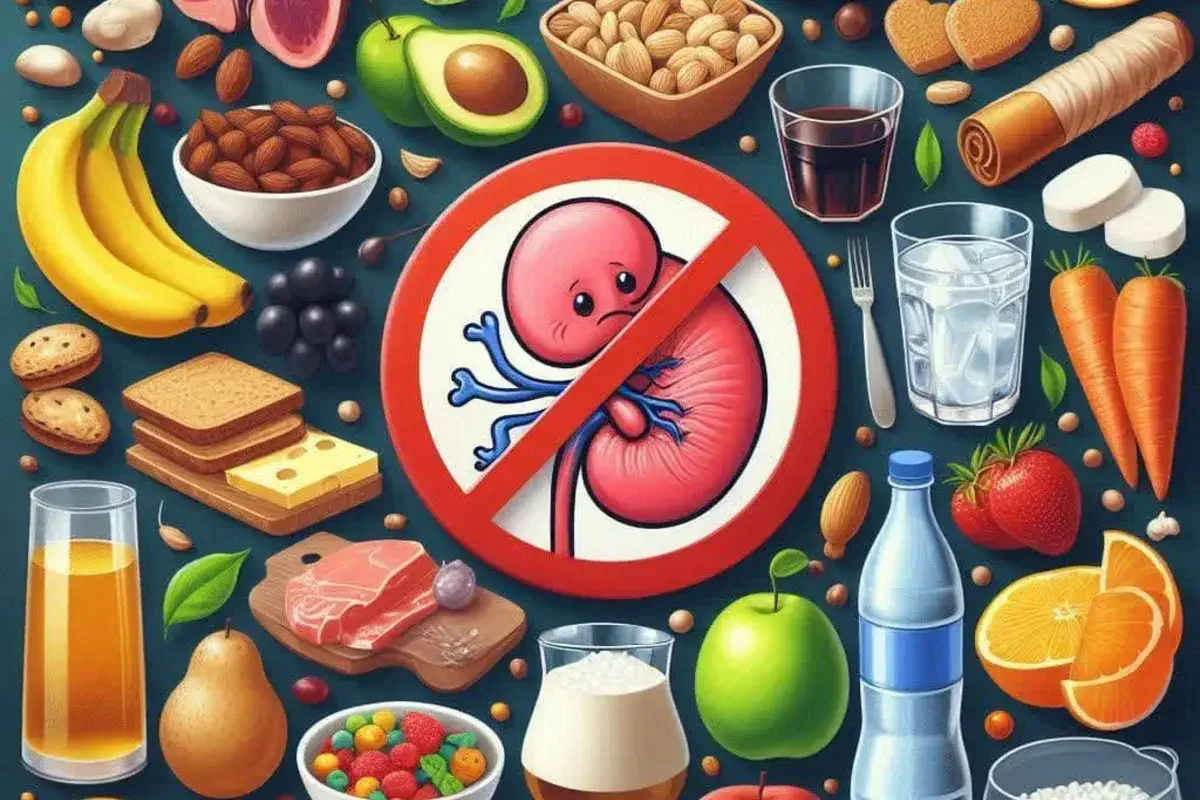
Food and drink affect a person’s health. Therefore, having a healthy weight and a healthy, balanced diet with low fat and salt intake for seniors can help control blood pressure. If you have diabetes, you can control your blood sugar by choosing foods and drinks carefully. Controlling blood pressure and diabetes can help prevent kidney disease and even its worsening.
General principles of Chronic Kidney Disease Diet
We said that kidney disease has different stages and at each stage, kidney function decreases to a different extent. For this reason, the diet of kidney patients at each stage must be adjusted according to their condition. In the early stages of the disease, food restrictions are much less, but as the damage to the kidney nephrons increases, the need for more serious and severe restrictions is felt to maintain the body’s balance.
One of the key points in the diet for kidney patients is to pay attention to the amount of protein and energy intake. If these amounts are not enough, the body turns to muscle breakdown to meet its needs. This process not only leads to increased pressure on the kidneys, but can also affect the general health of the body. Therefore, reducing food intake can be just as dangerous as consuming too much.
Many kidney patients do not eat enough and become malnourished due to fear of the disease progressing or further damage. Continuing this process can exacerbate kidney damage and also put other vital organs, such as the heart, at risk. Chronic kidney disease diet should have a series of general principles in order to achieve the best results:
Diet in the 1st and 2nd Stages of Chronic Kidney Disease
In stages 1 and 2 of chronic kidney disease, while maintaining relative kidney function, it is especially important to focus on dietary management to prevent further damage to these organs. Below are more details on the appropriate protein excretion diet for these stages:
Protein Restriction
In these stages, the amount of protein intake for elderly per day should be one gram per kilogram of body weight. This means that if you weigh 70 kilograms, you should get about 70 grams of protein per day. Also, half of this protein should come from high-quality sources such as meat and dairy. High-quality proteins not only help meet the body’s needs, but also help maintain kidney health. This amount of protein is enough to meet the body’s needs without putting additional strain on the kidneys.
Sodium Restriction
One of the main reasons for limiting sodium is to prevent high blood pressure. High blood pressure can cause serious damage to the nephrons (kidney cells). At this stage, sodium intake should be less than 2,400 milligrams per day. Considering that different foods contain small amounts of sodium and considering that table salt is the main source of sodium, approximately one-third of a teaspoon of salt can be consumed per day. Of course, to determine the exact amount of salt, more calculations must be made and this amount may vary for each person. You can use natural spices and flavors instead of salt.
Pay Attention to Underlying Diseases
If the patient has underlying problems such as diabetes, cardiovascular diseases, etc., dietary restrictions related to these diseases should also be considered. The main goal should always be to maintain kidney health. By strictly following the diet and controlling underlying diseases, the progression of damage to the kidney nephrons can be prevented and there will be no need for more severe dietary restrictions. If underlying diseases are not controlled, they can cause more severe kidney damage.
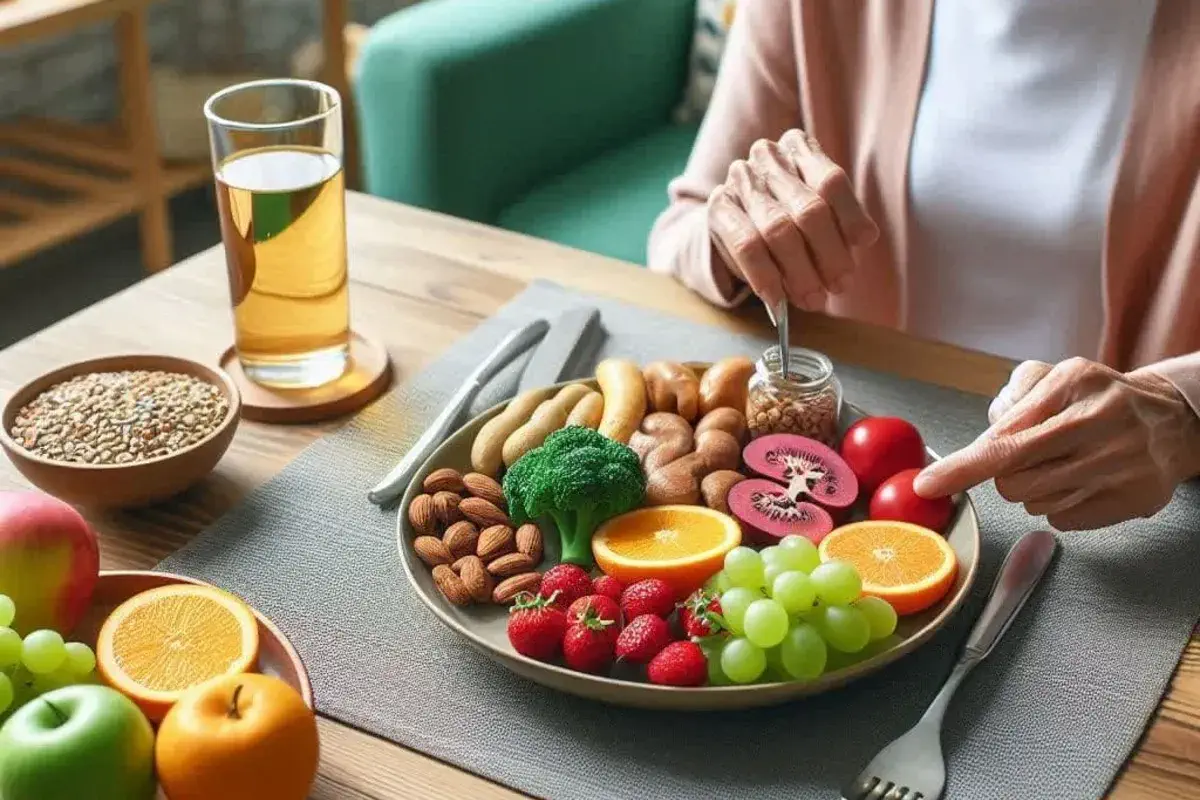
Diet in Stages 3 – 5 of Chronic Kidney Disease
In stages 3 and later of chronic kidney disease, kidney function impairment increases sharply. In these stages, the kidneys cannot properly regulate the levels of electrolytes such as phosphorus, sodium and potassium. Especially in stage 5, the kidneys are damaged to the point that they are not even able to regulate body fluids and problems with urination occur. For this reason, dietary restrictions in these stages are much more severe than in the early stages of the disease.
Protein Restriction
In stages 3 to 5, the amount of protein intake should be reduced to 0.6 to 0.8 grams per kilogram of body weight. This means that if you weigh 70 kilograms, you should get about 42 to 56 grams of protein per day. Of this amount, at least half of the proteins should come from high-quality sources to help maintain health.
Electrolyte Restriction
In these stages, more severe restrictions are imposed on electrolytes:
- Sodium: Sodium intake should be reduced to less than 2000 mg per day. This restriction is to prevent increased blood pressure and water retention in the body.
- Potassium: Potassium intake should also be reduced to less than 3000 mg per day, as increased potassium can lead to serious heart complications.
- Phosphorus: Phosphorus intake should also be limited to less than 1000 mg per day, as increased phosphorus levels in the body can lead to further damage to the kidneys.
Fluid Restriction
If the patient has edema (swelling in the limbs due to water retention) or decreased urine output, fluid intake, including water, should also be restricted. In these situations, fluid intake should be limited to only 500 ml more than the amount of water excreted in the urine. This helps reduce the strain on the kidneys and prevent fluid retention in the body.
By following these restrictions, you can help better control the symptoms of the disease and maintain the quality of life of kidney patients. Also, regular consultation with a doctor and nutritionist is essential to carefully adjust the diet to prevent more serious complications.
Chronic Kidney Disease Diet Food List
Protein excretion usually occurs in the early stages of kidney disease or some acute kidney diseases. As a result, we apply a limit of 0.6 to 1 gram of protein per kilogram of body weight in the diet of protein excretion kidney patients, depending on how many percent of the kidney still maintains its normal function. For example, a 70-kg person is allowed to receive between 42 and 70 grams of protein through various foods throughout the day.
But what foods should we limit in a low-protein diet for kidney patients? Or what to eat for kidney failure? Below is a list of protein-containing foods that should be limited in the diet of protein excretion kidney patients. The same restrictions should be observed in the diet to reduce urea and creatinine so that the urea and creatinine levels gradually decrease and reach normal levels or close to them.
Dairy
Food units in the diet of protein excretion kidney patients are different from food units for normal people and should not be confused with each other. Each unit of the dairy group contains about 4 grams of protein and should be counted towards your protein intake.
Each unit of dairy in the Kidney Protein Excretion Diet is equivalent to half a glass of milk, cocoa milk, yogurt or ice cream, a quarter cup of powdered milk, 4 tablespoons of cream, 3 tablespoons of cream cheese or half a matchbox (15 grams) of regular cheese. In stages 3 to 5 of kidney disease, dairy intake is limited due to its high phosphorus content and you can use between half and one unit per day.
Meats
Meats are the main sources of protein in the diet of kidney patients. Each unit of the meat group has about 7 grams of protein and, like dairy, is considered a high-quality protein. Each unit of the meat group is equivalent to one matchbox (30 grams) of cooked red meat, cooked chicken, cooked turkey, cooked quail, cooked fish and shrimp, or 1 large whole egg or 2 egg whites. In the kidney protein elimination diet, after dairy, there is the most restriction in the meat group.
Put aside the misconception that chicken meat is harmful to the kidneys and use all kinds of meat in your diet. Of course, as we said, all meats, including chicken meat, contain a lot of protein and should not be consumed in excess. However, their balanced consumption is essential for kidney patients and they must be consumed.
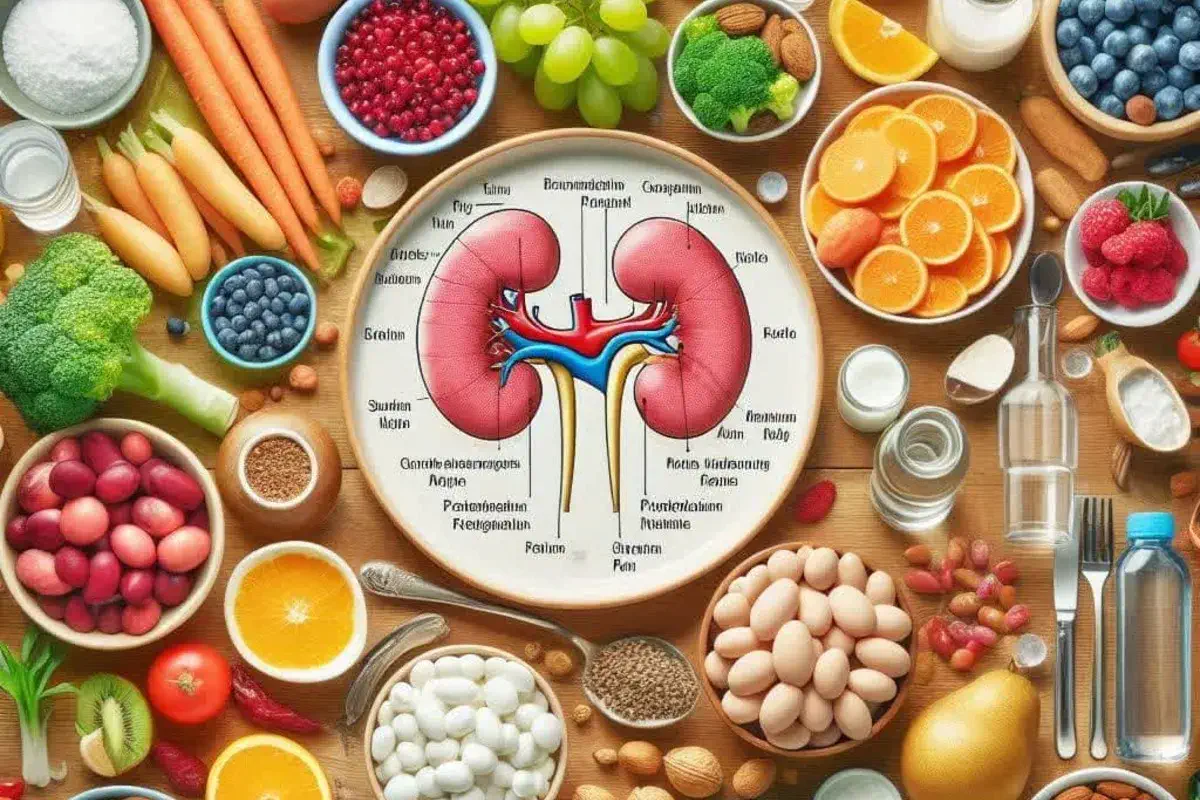
Cereals
Contrary to what many people think, cereals also contain protein. The amount of protein in cereals is not high, and there is only 2 grams of protein per unit. However, even these 2 grams cannot be ignored and should be counted as the allowed protein in the diet of kidney patients with protein excretion.
Each unit of cereals is equivalent to 30 grams of bread, 20 grams of dry bread, 30 grams of Yazdi cake, biscuits or Danish pastries, three-quarters of a cup of ready-made cereals, a cup of wheat germ, half a cup of cooked cereals, 3 tablespoons of flour, half a cup of cooked pasta or 5 tablespoons of cooked rice. You can still get most of your energy from rice and bread and not worry about consuming them. But you should calculate the amount of protein they receive so that you do not get too much protein.
Some people have the misconception that consuming pasta or rice is harmful for kidney patients. While white rice and plain pasta are considered low-protein grains, patients with kidney failure can include them in their diet. However, since rice and pasta also contain a small amount of protein, they should not be consumed in excess.
Legumes, nuts and soybeans
Legumes, nuts and soybeans are also high-protein foods that provide a lot of protein for your body. Each unit of legumes has 8 grams of protein, each unit of nuts has 7 grams of protein and each unit of soybeans has 14 grams of protein and you should calculate its amount in the diet of protein excretion from the kidneys.
Each unit of legumes is equal to half a cup of cooked legumes, each unit of nuts is equal to 30 grams of almonds, peanuts, pistachios, Japanese seed kernels and hazelnuts, 45 grams of walnuts, 25 grams of sunflower seed kernels, 35 grams of pumpkin seed kernels or 25 grams of watermelon seed kernels. Each unit of soybeans is equal to 3.5 tablespoons or 28 grams of soybeans.
Regarding the consumption of nuts and oil seeds in the diet of kidney patients, you should pay attention to the fact that they are salt-free. Another important point about legumes, nuts and soybeans is that in stages 3 and later of kidney disease, their intake should be severely limited due to high phosphorus and potassium.
Vegetables and Fruits
Vegetables and fruits also have a very small amount of protein. But even this small amount cannot be ignored in the diet of kidney patients with protein excretion. Each unit of vegetables has about 1 gram of protein and each unit of fruits has about 0.5 grams of protein. Be sure to include the protein content of these two food groups in the diet for protein excretion from the kidneys.
Each unit of the vegetable group is equivalent to half a cup of watercress, green beans, green peppers, raw cabbage, lettuce, spinach, rhubarb, cabbage, cauliflower, greens, spring onions, okra, mushrooms, green beans, etc. or one medium cucumber, one medium eggplant or zucchini, 5 asparagus spears, one carrot, half a corn, one tomato, one medium potato, or 2 tablespoons of tomato paste.
Each fruit unit includes half a glass of blueberries, peach juice, compote or pear juice, watermelon, blackberries, strawberries, raspberries, cherries, mango, peach compote, melon, gooseberries or half a glass of various fruit juices or half a lemon, one apple, 15 grapes, one peach, 2 tangerines, half a pomegranate, one persimmon, one kiwi, one nectarine, 3 dates, 5 prunes, half a banana, one pear, 2 apricots and 3 apricots.
Most fruits and vegetables are high in potassium and should be limited in stages 3 and later of kidney disease, which we will discuss in detail below.
Bad Food for Chronic Kidney Disease
Although there are many food choices in the chronic kidney disease diet, some foods are harmful to protein excretion. The first thing you should limit in this regard is sodium. Sodium, which is found in large amounts in table salt, increases blood pressure and increases pressure on kidney cells, and ultimately leads to increased protein excretion. Canned foods, processed foods, fast foods, sauces, etc. also contain high levels of sodium and are considered harmful foods for kidney protein excretion.
Foods fried at high temperatures can also cause damage to blood vessels and kidney cells due to the trans fatty acids they produce. Therefore, you should limit the consumption of these compounds and do not use them in your diet. Vegetable butter or margarine also contains a large amount of trans fatty acids, which you should avoid.
And finally, in people with blood sugar problems, using large amounts of simple sugars can cause an increase in sugar and subsequently the destruction of kidney cells and increased protein excretion. In these people, sugar, sweets, chocolate, syrup, candy, etc. are considered harmful foods for kidney protein excretion. Of course, in some cases, to provide the body with the energy it needs, we have to use some simple sugars in our chronic kidney disease diet, and in these cases, the intake of sugar-controlling drugs should be increased.
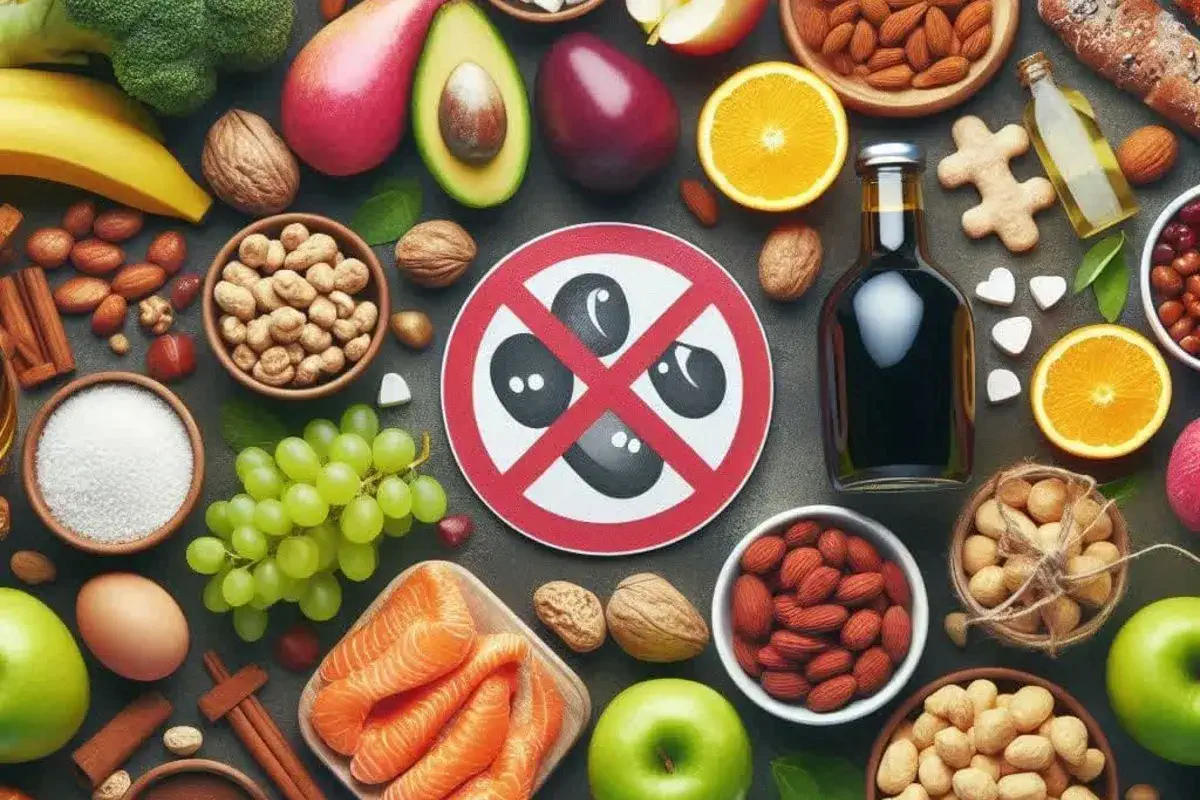
As you have seen, protein-free foods for kidney patients are limited to fats, oils, and simple sugars, and other food groups, including bread and cereals, dairy products, legumes, soy, meats, nuts, seeds, and to a lesser extent, protein is found in vegetables and fruits. On the other hand, the amount of potassium in fruits and vegetables is high, and they cannot be used in large quantities in the chronic kidney disease diet.
Fat consumption should not be excessive due to the increased risk of cardiovascular diseases. For this reason, you should definitely consult a nutritionist to adjust the amounts of macronutrients and micronutrients in your diet. In general, a low-protein diet for kidney patients should include more grains, fruits, vegetables, healthy fats, and less meat, dairy, legumes, and nuts.
List of Allowed and Prohibited Foods for Chronic Kidney Disease Diet
There are many foods and foods, some of which are allowed for kidney patients and can be consumed safely. Also, some others are prohibited in this disease and will aggravate the disease. Here is a list of allowed and prohibited foods for chronic kidney disease diet. Of course, it should be noted that it is better to consume each of these substances under the supervision of a doctor and nutritionist:
Allowed foods
Allowed foods for chronic kidney patients include:
Fruits and vegetables
- Cauliflower is a good source of vitamin C, vitamin K, and fiber
- Blueberries contain strong antioxidants and are low in potassium
- Red grapes are rich in vitamin C and antioxidants
- Egg whites are a source of high-quality protein and low in phosphorus
- Garlic is a natural flavoring and sodium-free
- Apples are low in potassium and suitable for kidney patients
- Bellied peppers are low in potassium and rich in vitamin C2
Low-fat proteins
- Egg whites are a source of high-quality protein and low in phosphorus
- Skinless chicken is a quality protein and low in phosphorus
- Fish and other lean meats
Grains and legumes
- Buckwheat (rye) is low in phosphorus and suitable for kidney patients
- Bulgarian millet is low in phosphorus and suitable for kidney patients
Oils
- Canola oil is a source of healthy fat and suitable for cooking
- Olive oil Source of healthy, sodium-free fat
Low-fat dairy
- Such as milk, buttermilk, low-fat yogurt, and low-fat, low-salt cheese
Foods to Avoid
Some foods to avoid for kidney patients include:
- Dark-colored soft drinks containing added phosphorus
- Bananas because they are high in potassium
- Tomatoes and tomato products, such as tomato sauce, which are high in potassium
- Nuts and seeds, and full-fat dairy products, such as milk and cheese, which are high in phosphorus
- Processed foods, such as canned soups, which are high in sodium
- Red meat because it is high in protein
Concluding Remarks
Kidneys are one of the most important and vital organs in the body, which have multiple functions and dysfunction will lead to acute problems. Along with specialized treatment methods, having a healthy diet is one of the most important strategies for controlling kidney disease.
In this article, we mentioned very important points about the importance of nutrition for kidney patients. Some of the most important points include the role of kidney function in the health of the body, general principles of diet for kidney patients, prohibited and permitted foods for these patients, and other important points to improve the health of these patients.
Paying attention to these points is more important if the patient is old. In these situations, regular visits to the doctor are essential. Also, for elderly people with kidney disease, having a geriatric nurse who has sufficient experience in this field is recommended to regularly follow up on the patient’s health status.
Could you help us make this content even better? What do you love, and what can we improve? Share your thoughts below, feedback is the key to creating better content for YOU

Frequently Asked Questions
Are legumes harmful to the kidneys?
In answering this question, the patient’s condition should be considered. Since legumes are very high in phosphorus and potassium, if the levels of these two minerals in the blood are not controlled, they should be avoided. Otherwise, by calculating their potassium and phosphorus levels, a small amount of them can be included in the diet and they are not harmful to the kidneys.
What is good for eliminating kidney protein excretion?
The only solution to this problem is to limit protein intake, and no food can cure protein excretion from the kidneys.
